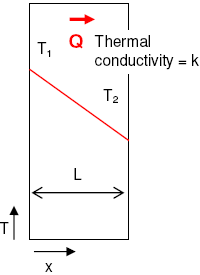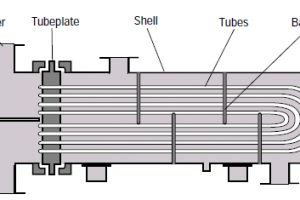Compressibility factor is a dimensionless quantity used in thermodynamics and fluid mechanics to describe the deviation of a real gas from its ideal gas behavior. Accurate compressibility factor calculation is crucial in the design and operation of various equipment, such as distillation columns, heat exchangers, and reactors. The compressibility factor is used to estimate the properties of gases under various process conditions.
Table of content:
Compressibility factor
Air compressibility factor calculation
Compressibility factor
It is defined as the ratio of the actual volume of a gas to the volume it would occupy if it behaved as an ideal gas under the same conditions of temperature and pressure. The compressibility factor is denoted by the symbol Z and is expressed as:
Z = Vactual / (RT / P)
where, Vactual is the actual volume of the gas, R is the universal gas constant, T is the temperature of the gas, and P is the pressure of the gas.
For an ideal gas, the compressibility factor is always equal to 1, regardless of the temperature or pressure. However, real gases deviate from ideal gas behavior, especially at high pressures and low temperatures. At these conditions, the molecules of the gas are closer together and interact more strongly, leading to intermolecular forces that can cause the gas to condense into a liquid or solid.
The compressibility factor is used to quantify the extent of deviation from ideal gas behavior. For a given gas, the compressibility factor depends on the temperature, pressure, and the identity of the gas molecules. At low pressures, the compressibility factor is greater than 1, indicating that the gas is more compressible than an ideal gas. At high pressures, the compressibility factor is less than 1, indicating that the gas is less compressible than an ideal gas.
The compressibility factor is also used to calculate other thermodynamic properties of real gases, such as the specific heat capacity, enthalpy, and entropy. These properties are important in the design and operation of many industrial processes, such as the production of natural gas, the liquefaction of gases, and the design of engines.
Air compressibility factor calculation
Problem Statement
Calculate the compressibility factor (Z factor) for air at the following temperature and pressure condition -
P = 15 barg
T = 600C
Solution
The compressibility factor or Z factor for air is calculated in following simple steps using linear interpolation technique and air compressibility factor table.
Step1
Temperature and Pressure unit conversion to 'Kelvin' and 'bara'.
T = 600C = 60+273.16 K = 333.16 K
P = 15 barg = 15 + atmospheric pressure = 15 + 1.013 bara
P = 16.013 bara ≈ 16 bara (roughly for purpose of this calculation)
Step2
Refer to EnggCyclopedia's air compressibility factor table to get air compressibility factors at neighboring temperature and pressure conditions. Air compressibility at following four points is noted.
| P(bara) | P(bara) | Air Compressibility (Z factor) |
| 10 | 300 | 0.9974 |
| 10 | 350 | 1.0004 |
| 20 | 300 | 0.9950 |
| 20 | 350 | 1.0014 |
Step3
First, mean air compressibility is calculated @ 10 and 20 bara by linear interpolation around the temperature values.
Z1 (@10bara & 333.16K) = 0.9974×(350.0-333.16)/(350-300)+1.0004×(333.16-300.0)/(350-300)
Z1 (@10bara & 333.16K) = 0.9974×0.3368+1.0004×0.6632= 0.9994
Similarly,
Z2 (@20bara & 333.16K) = 0.9950×0.33680+1.0014×.6632 = 0.9992
Then the air compressibility at given temperature and pressure conditions is estimated by linear interpolation around the pressure values.
Z (@16bara & 333.16K) = 0.9994×(20-16)/(20-10)+0.9992×(16-10)/(20-10)
Z (@16bara & 333.16K) = 0.9993




